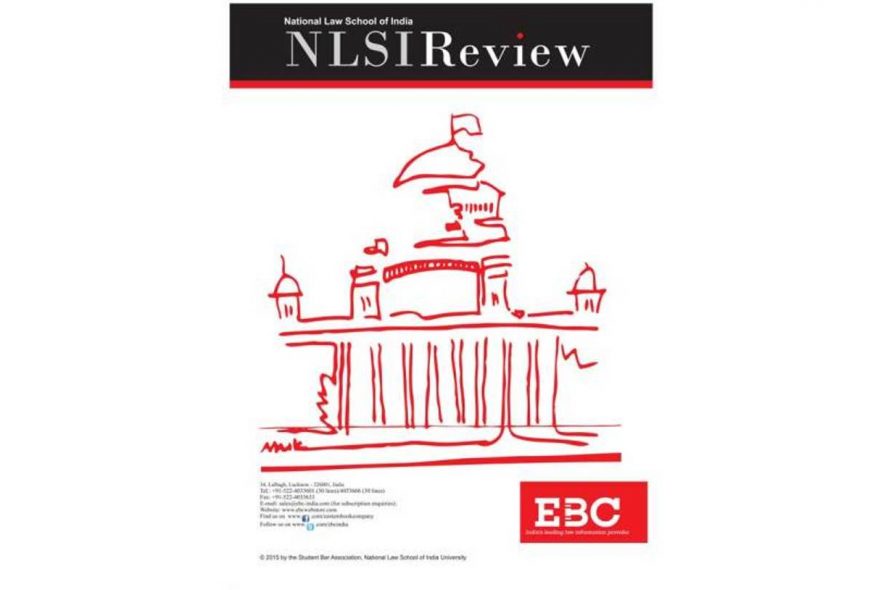The National Law School of India Review Submission Guidelines
About NLSIR
The National Law School of India Review (NLSIR) is now accepting submissions for its upcoming issue – Volume 31(1). The NLSIR is the flagship law review of the National Law School of India University, Bangalore, India. The NLSIR is a bi-annual, student edited, peer-reviewed law journal providing incisive legal scholarship on issues that are at the forefront of contemporary legal discourse. In the past 30 years, the NLSIR has regularly featured articles authored by judges of the Indian Supreme Court, senior counsels practicing at the Indian bar, and several renowned academics from national and foreign universities.
The most recent volume of the NLSIR, Vol. 30 will feature contributions by Professor Jonathan Herring, Vice Dean and Professor of law, Faculty of Law, University of Oxford, and Professor Steven Freeland, the Dean of the School of Law and Professor of International Law at Western Sydney University, Australia, among several others. Moreover, NLSIR has the unique distinction of being the only Indian student-run law journal to be cited twice by the Supreme Court of India, with the latest one in the landmark judgment in K.S. Puttaswamy v. Union of India, (2017) 10 SCC 1. NLSIR has also recently been cited in R. S. Bachawat’s Law of Arbitration and Conciliation, a leading treatise on arbitration law in India.
NLSIR is printed and distributed by EBC.
Submission Categories:
Submissions are accepted for the following categories:
1. Long Articles: Between 5,000 and 10,000 words. Papers in this category are expected to engage with the theme and literature comprehensively, and offer an innovative reassessment of the current understanding of that theme. It is advisable, though not necessary, to choose a theme that is of contemporary importance. Purely theoretical pieces are also welcome.
2. Essays: Between 3,000 and 5,000 words. Essays are far more concise in scope. These papers usually deal with a very specific issue and argue that the issue must be conceptualized differently. They are more engaging and make a more easily identifiable, concrete argument.
3. Case Notes and Legislative Comments: Between 1,500 and 2,500 words. This is an analysis of any contemporary judicial pronouncement or a new piece of legislation whether in India or elsewhere. The note must identify and examine the line of cases in which the decision in question came about and comment on implications for the evolution of that branch of law. In case of legislative comment, the note must analyze the objective of the legislation and the legal impact the same is expected to have. All word limits are exclusive of footnotes. The journal is flexible regarding the word count depending on the quality of the submission. Pieces in any of the above categories with relevance to India or Indian law are particularly welcome. This, however, is not a prerequisite.
Formatting and Citation Guidelines
body of the manuscript should be in Times New Roman, font size 12 with double linespacing. The footnotes should be in Times New Roman, font size 10 with single line spacing. The manuscript should contain only footnotes (and not end notes) as a method of citation. Citations must conform to the Bluebook (20th edn.) style of citation. Authors are required to adhere to the NLSIR Style Guide which can be found here.
How to submit?
The NLSIR only accepts electronic submissions. Submissions may be emailed to mail.nlsir@gmail.com under the subject heading “31(1) NLSIR – Submissions.” All submissions must contain the following:
1. The manuscript in .doc or .docx format. The manuscript should not contain the name of the author or his/ her institutional affiliation or any other identification mark.
2. A cover letter containing the name of the author, professional information, the title of the manuscript, and contact information.
3. All manuscripts must also contain an abstract of not more than 150 words.
NLSIR accepts pieces for the first of its bi-annual volumes on a rolling basis. However, for pieces to be considered for Volume 31(1), the deadline December 1, 2018. After this date, it shall be considered for Volume 32(1). NLSIR shall shortly release a call for papers for Volume 31(2). This volume is based on the same theme of our Annual Symposium. More Information For more information on NLSIR, please log on to www.nlsir.com.







